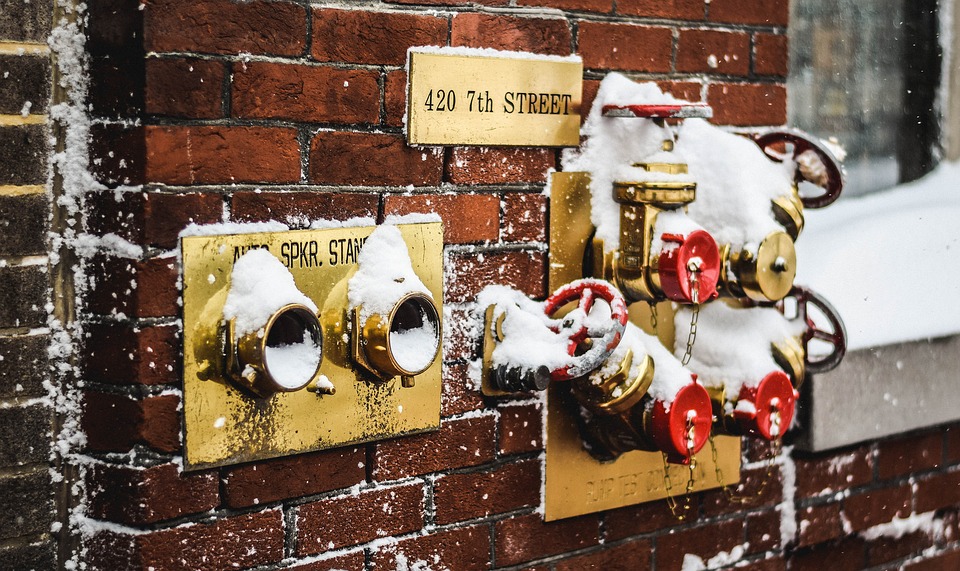How defrost pipes and pipes blocked by ice and snow? Tips to prevent water pipes from freezing overnight in cold winter temperatures? Methods for freeing frozen pipes and ducts.
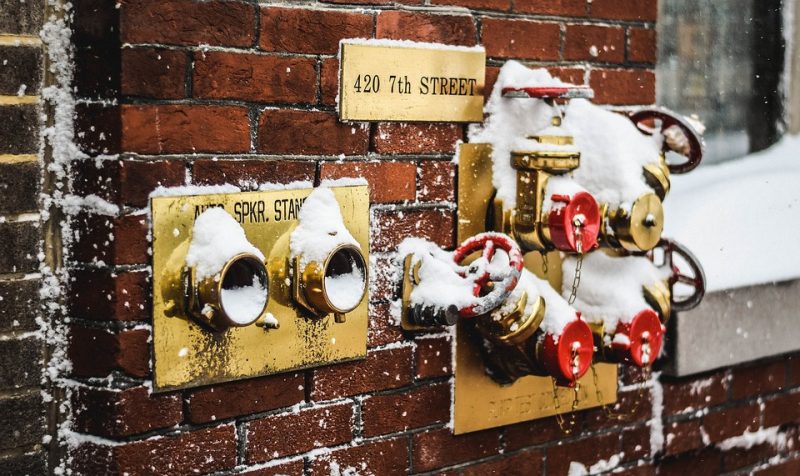
With the arrival of the inverse and the low temperatures, often accompanied by snowfall is frosts, the phenomenon of icy pipelines.
Have you ever opened the taps after a night out temperatures below freezing is find yourself without water?
Probably i pipes are blocked in one or more points from ice caps.
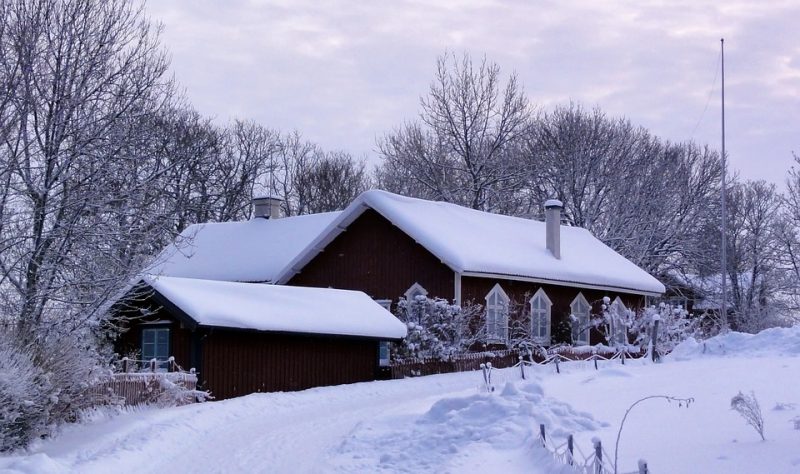
How to prevent freezing of water pipes
Let’s see how to prevent this problem from occurring thanks to some tricks and tips.
Open the taps and leave them open
It is the simplest secret to adopt especially when you are unable to take other measures.
It is mainly used in southern Italy (Campania, Puglia, Calabria, Sicily), i.e. in those areas where snowfalls are rare and therefore you are not ready to counteract low temperatures: basically yes leave a water tap slightly open, doing run a trickle of water, so from prevent it from stagnating and freezing, blocking the pipes with plugs, in joints, points or even entire pieces of pipe.
Read also: How to recycle Pringles tubes in an ingenious way
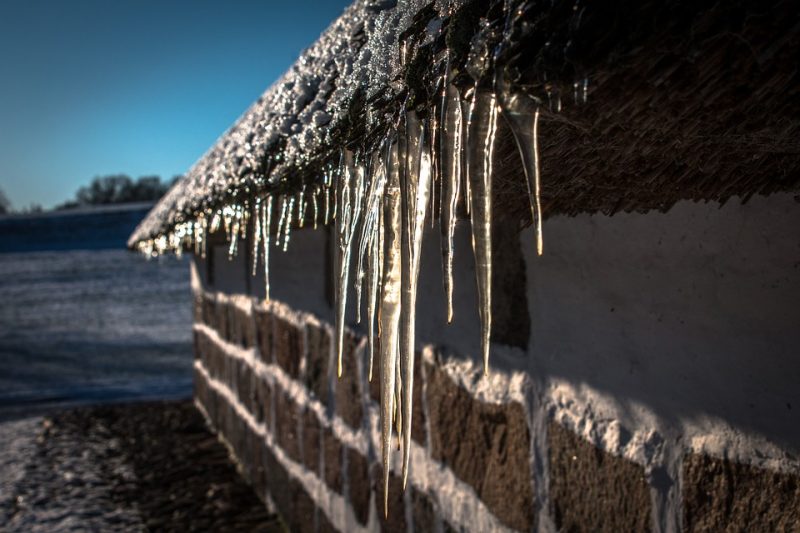
Insulate the ducts and pipes
In external junctures or near boilers and meters you can apply hose covers or sheaths in order to keep the temperatures of those delicate points higher.
Heat with thermal wires
Especially in mountain areas, high-altitude houses, huts or in any case areas where snow and temperatures below zero degrees are frequent, it is possible to adopt electric heating of the pipes in more sensitive and exposed areas.
These are special cables that are wrapped around the pipes and heat them to keep the temperature above the freezing point.
Outdoor fountains and pumps
Disconnect pumps from outdoor or garden fountain manifolds to avoid ice plugs.
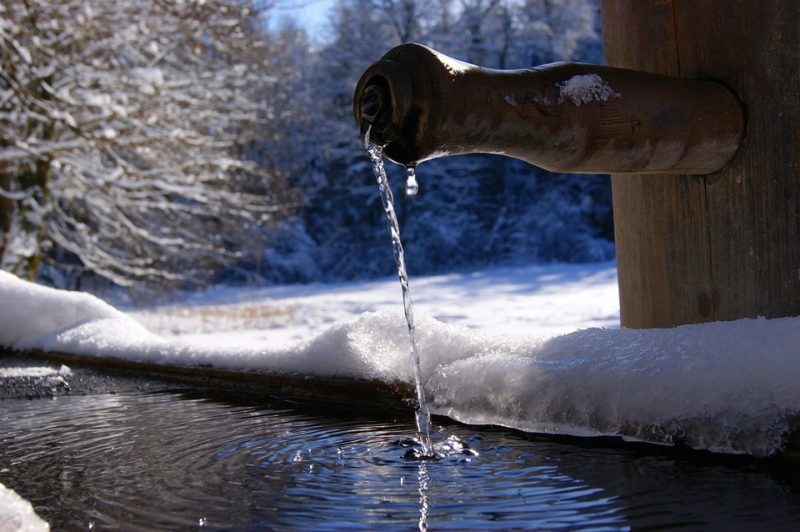
How to thaw the pipes
Unfortunately, following a snowfall with low temperatures we found ourselves without water and we don’t know what to do.
Here’s how to proceed, what to know and what not to do:
- Avoid thawing the pipes quickly as this operation can create thermal shocks that could weaken and damage joints and pipes
- Avoid thermal stress they could ruin the gaskets and joints with the possibility of breakage and failure.
- Do not use open flames or too hot air on joints and pipes.
- Try to figure out which pipes are blocked by ice.
- Heat the pipes to free them from the ice caps.
- If you highlight a water loss or one breakage of a joint or pipe, promptly close the safety valves or keys and call a plumber for an inspection and technical intervention.
It might interest you: 4 foolproof ways to purify your home water
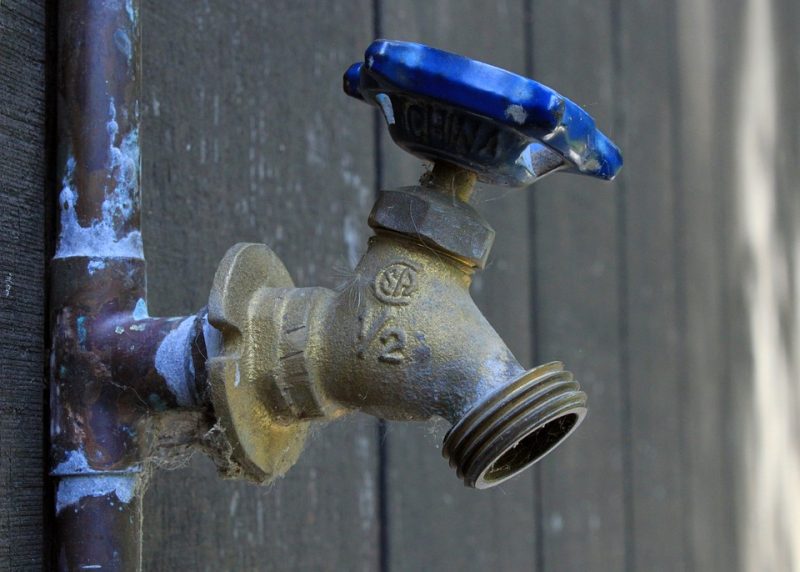
How to understand which pipes are frozen
Let’s start with the water meter which is generally the most delicate element and which should always be protected with a special box. We check the presence of ice in the collectors of the meter.
We also check the external pipes up to the entrance to the house to assess the presence of ice there too, especially in the position of joints and joints.
Once the sections have been identified, we proceed to heat the pipes.
Warm frozen piping with rags
We wrap around the connection pipes to the counter some tea towels or cloth or better wool.
In this way we bring heat to the affected area which will then raise the temperatures by thawing the ice, freeing the duct.
It is one of the actions to be taken even if we have not identified the frozen point.
Do you want design advice on how to furnish? Join the group
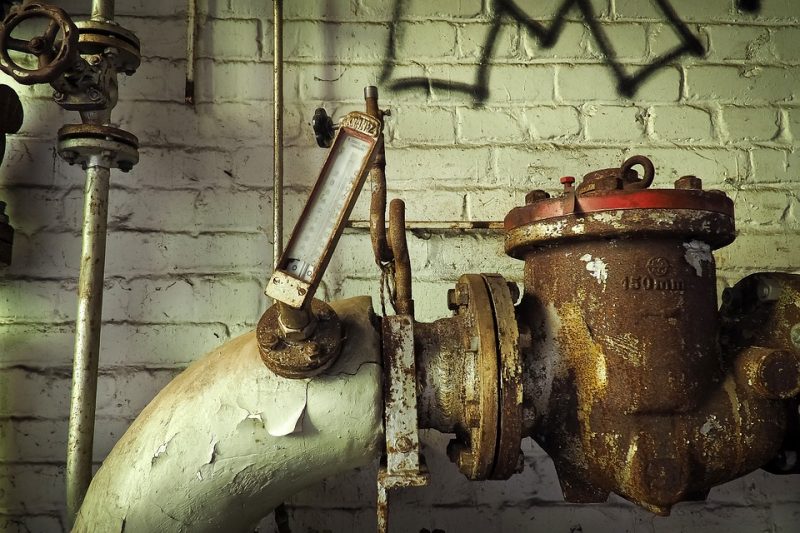
Turn on the frozen pipe radiators
We turn on the heaters and radiators that use an internal water cycle and are therefore not affected by the blockage of the taps.
The heat of the pipes could bring heat in the vicinity of iced areas and valves, also freeing the cold water duct.
Heat pipes with the hair dryer
It is possible to raise the temperatures in specific areas thanks to stoves and hair dryers.
It is advisable to use temperatures that are not too hot to avoid thermal shock.
How defrost pipes and pipes blocked by ice and snow? Tips to prevent water pipes from freezing overnight in cold winter temperatures? Methods for freeing frozen pipes and ducts.

With the arrival of the inverse and the low temperatures, often accompanied by snowfall is frosts, the phenomenon of icy pipelines.
Have you ever opened the taps after a night out temperatures below freezing is find yourself without water?
Probably i pipes are blocked in one or more points from ice caps.

How to prevent freezing of water pipes
Let’s see how to prevent this problem from occurring thanks to some tricks and tips.
Open the taps and leave them open
It is the simplest secret to adopt especially when you are unable to take other measures.
It is mainly used in southern Italy (Campania, Puglia, Calabria, Sicily), i.e. in those areas where snowfalls are rare and therefore you are not ready to counteract low temperatures: basically yes leave a water tap slightly open, doing run a trickle of water, so from prevent it from stagnating and freezing, blocking the pipes with plugs, in joints, points or even entire pieces of pipe.
Read also: How to recycle Pringles tubes in an ingenious way

Insulate the ducts and pipes
In external junctures or near boilers and meters you can apply hose covers or sheaths in order to keep the temperatures of those delicate points higher.
Heat with thermal wires
Especially in mountain areas, high-altitude houses, huts or in any case areas where snow and temperatures below zero degrees are frequent, it is possible to adopt electric heating of the pipes in more sensitive and exposed areas.
These are special cables that are wrapped around the pipes and heat them to keep the temperature above the freezing point.
Outdoor fountains and pumps
Disconnect pumps from outdoor or garden fountain manifolds to avoid ice plugs.

How to thaw the pipes
Unfortunately, following a snowfall with low temperatures we found ourselves without water and we don’t know what to do.
Here’s how to proceed, what to know and what not to do:
- Avoid thawing the pipes quickly as this operation can create thermal shocks that could weaken and damage joints and pipes
- Avoid thermal stress they could ruin the gaskets and joints with the possibility of breakage and failure.
- Do not use open flames or too hot air on joints and pipes.
- Try to figure out which pipes are blocked by ice.
- Heat the pipes to free them from the ice caps.
- If you highlight a water loss or one breakage of a joint or pipe, promptly close the safety valves or keys and call a plumber for an inspection and technical intervention.
It might interest you: 4 foolproof ways to purify your home water

How to understand which pipes are frozen
Let’s start with the water meter which is generally the most delicate element and which should always be protected with a special box. We check the presence of ice in the collectors of the meter.
We also check the external pipes up to the entrance to the house to assess the presence of ice there too, especially in the position of joints and joints.
Once the sections have been identified, we proceed to heat the pipes.
Warm frozen piping with rags
We wrap around the connection pipes to the counter some tea towels or cloth or better wool.
In this way we bring heat to the affected area which will then raise the temperatures by thawing the ice, freeing the duct.
It is one of the actions to be taken even if we have not identified the frozen point.
Do you want design advice on how to furnish? Join the group

Turn on the frozen pipe radiators
We turn on the heaters and radiators that use an internal water cycle and are therefore not affected by the blockage of the taps.
The heat of the pipes could bring heat in the vicinity of iced areas and valves, also freeing the cold water duct.
Heat pipes with the hair dryer
It is possible to raise the temperatures in specific areas thanks to stoves and hair dryers.
It is advisable to use temperatures that are not too hot to avoid thermal shock.

